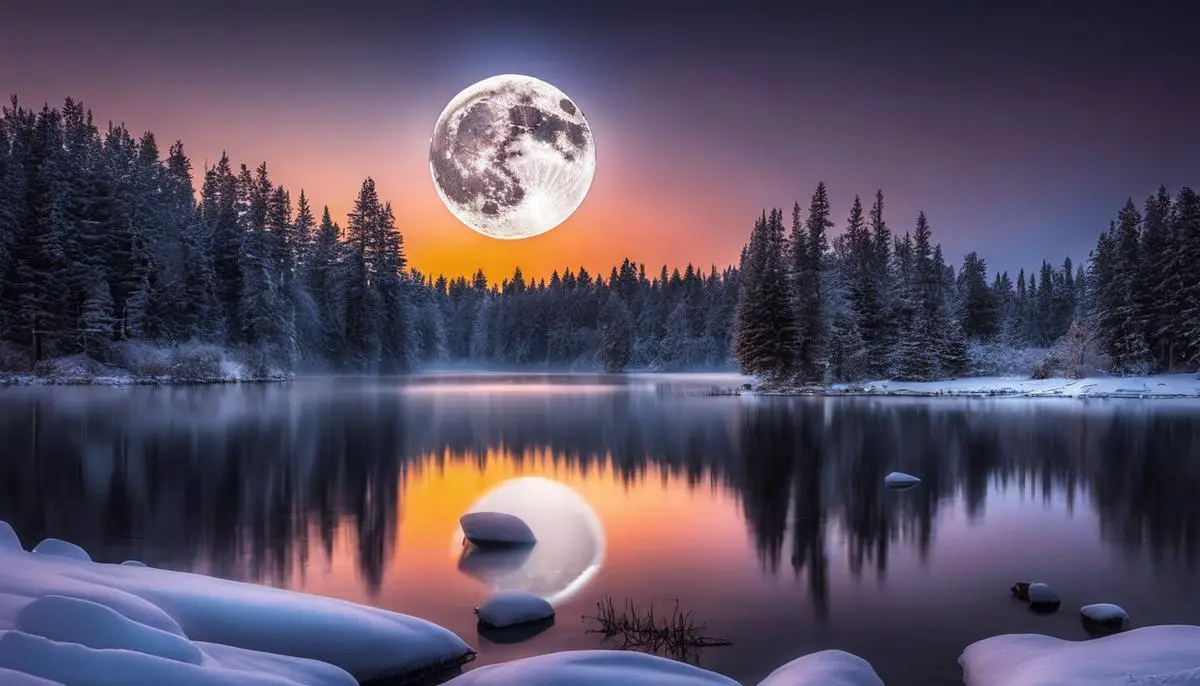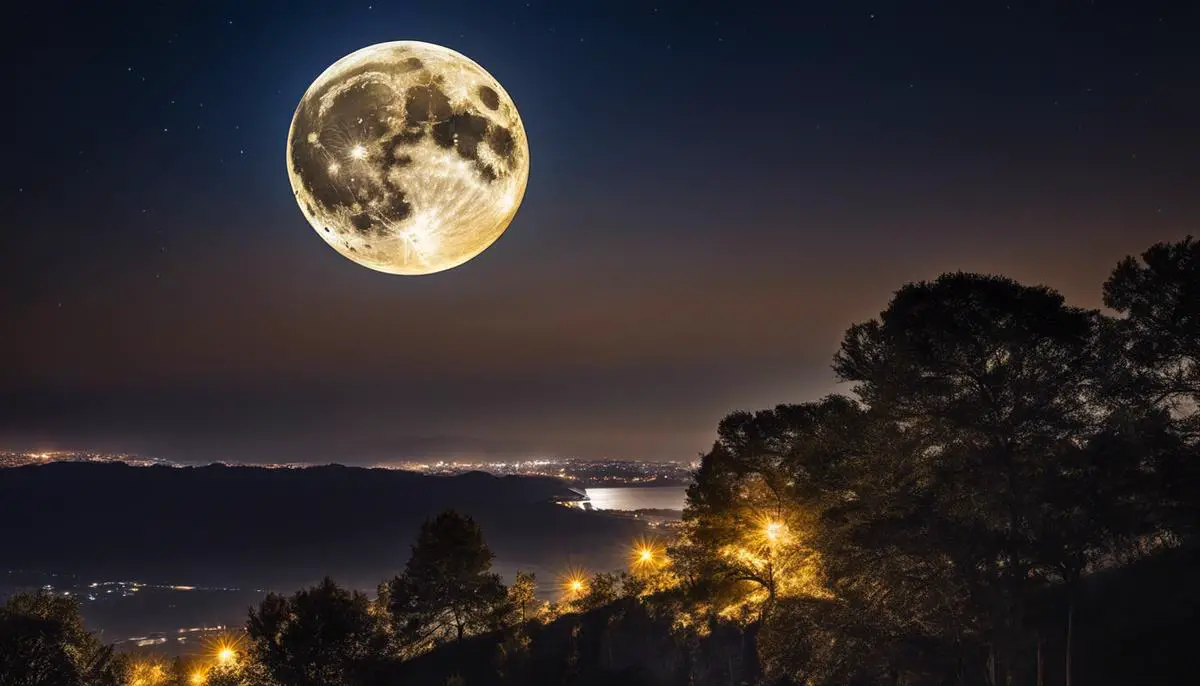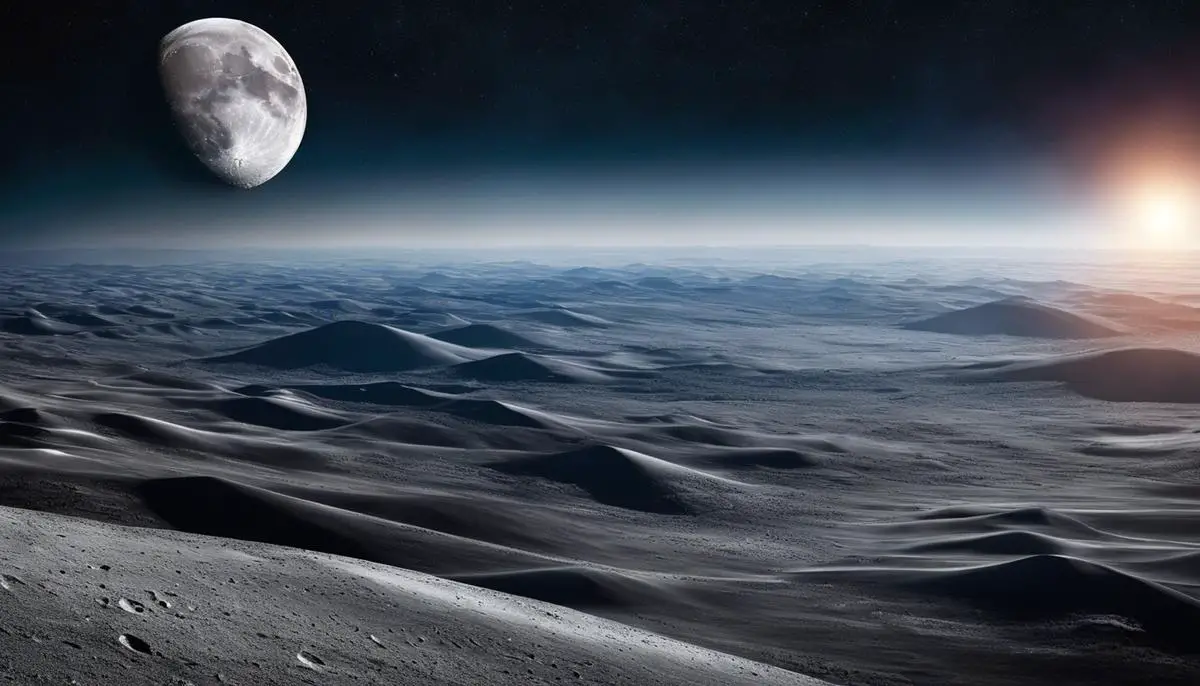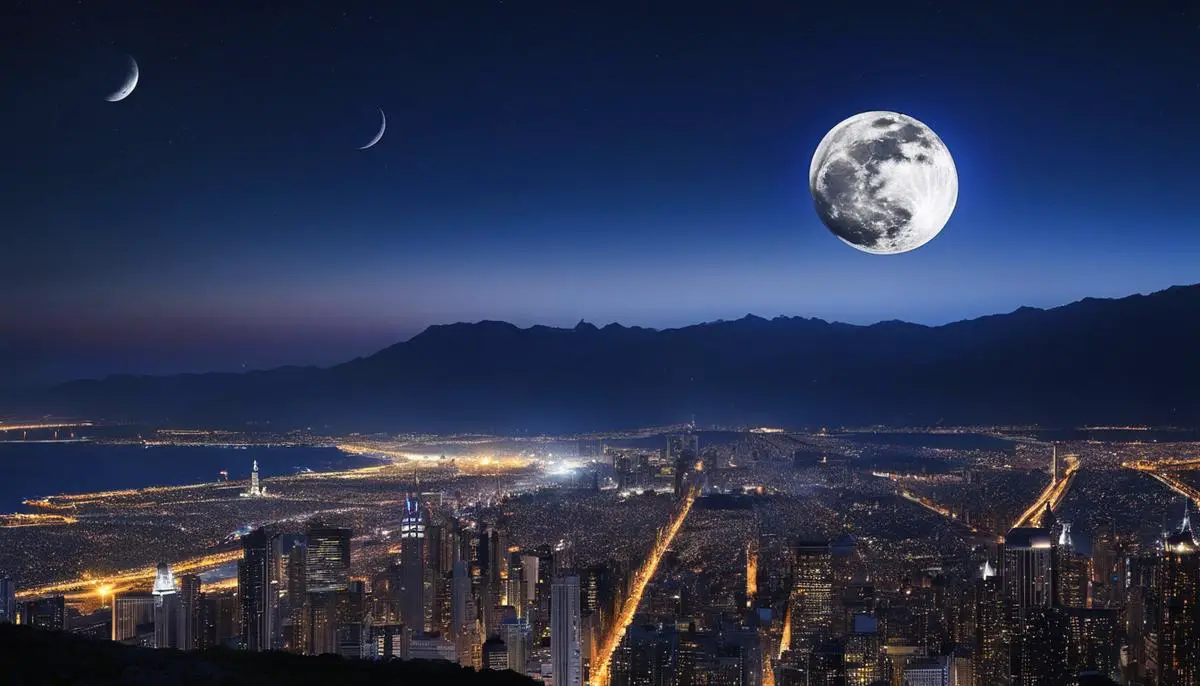The allure of the full moon hanging in the nighttime sky has captivated mankind since time immemorial. Its radiance has sparked scientific curiosity, influenced cultures, and stirred the human psyche. As we approach the dawn of 2024, the first full moon of the New Year promises not only to shed light to the Earth’s darkness but also to illuminate our understanding of its astrophysical character, cultural significance, and possible influence on human behavior and psychology. The orbit, size, brightness, and its impact on Earth’s gravitational pull and tides, present a fascinating exploration into the realm of space science. Journey with us as we traverse the celestial bridge that connects the scientific dimensions with the historical and psychological imprints left by this mesmerizing lunar body.
Astrophysical Character of the 2024’s First New Year Full Moon
The Intriguing Scientific Characteristics of 2024 New Year’s First Full Moon
Significant astronomical events have historically piqued widespread interest, and the 2024 New Year’s first full moon is no exception. The first full moon, colloquially referred to as ‘Wolf Moon’ according to Native American and colonial traditions, is expected to bring with it a captivating array of scientific features. Let’s delve into a few of the distinctive characteristics sure to make this celestial show one for the ages.
A full moon occurs when the orbit of the moon aligns with the Earth and sun so that the sun fully illuminates the moon’s surface visible from Earth, presenting us with a luminous and awe-inspiring spectacle. The 2024 New Year’s full moon is expected to follow this same pattern.
The light-exposure of this moon will yield a visible brightness significantly higher than the average. Due to the interplay between the lunar and solar orbits, the positioning of the full moon in early January will likely be closer to the night zenith or highest point in the sky. This means it rises almost exactly when the sun set, and will set almost exactly when the sun rises. So, in addition to increased visibility, the moon’s altitude will significantly amplify its luminous intensity.
Moreover, this full moon coincides with Perigee, a fascinating term in celestial terminology. Perigee refers to the point at which the moon is closest to the Earth in its elliptical orbit. Considering this, the 2024 New Year’s full moon, falling within the perigee, will appear larger and brighter than a regular full moon – a spectacle often termed as ‘Supermoon.’ Observers will arguably witness an astonishing 14% increase in the moon’s size and a 30% enhancement in its brightness.
Adding to the allure, the early January full moon often yields Albdebo effects, referring to the proportion of incident light that is reflected off the moon’s surface. Due to its higher zenith during winter, this New Year’s full moon should have a lower Albdebo effect, making it visually much brighter.
Lastly, the chance of a penumbral eclipse is worth watching for. In the early part of 2024, the interplay between sun, Earth, and moon could result in the moon passing partially through the Earth’s outer, partial shadow, or penumbra. Although this creates a somewhat less dramatic effect than a total lunar eclipse, it adds a subtle dimming across the moon’s surface, offering a mesmerizing sight for keen observers.
The 2024 New Year’s first full moon promises to serve as an extraordinary astronomical event, packed with unique scientific phenomena. The interrelation of orbits, the light-reflecting capacity, proximity to our planet, and potential penumbral eclipse make it a celestial theatre set for an unforgettable show. Look up and enjoy the moon in its impressive, scientifically fascinating glory.

Historical and Cultural Significance of the Full Moon
From ancient times to today, the full moon has played a unique role in shaping events and cultural practices worldwide. The majesty of a full moon in the night sky has always held a mystical allure, captivating human imagination and leading civilizations to attribute remarkable significance to this lunar phase.
On the historical front, many pivotal events occurred under the glowing full moon, not by mere coincidence but instead inspired by its brilliance. For example, the Romans, known for their meticulous planning and strategies, often planned their wars based on lunar cycles. The bright light of a full moon provided improved visibility, facilitating better maneuvering and attack during night wars. Similarly, pre-colonial tribes of Native Americans adopted the lunar calendar, naming each full moon to symbolize the changing seasons and guide their activities like hunting and harvesting.
Turning to the cultural arena, countless traditions and rituals worldwide are intertwined with the full moon’s cycle. Ancient legends often portrayed the full moon as a divine entity. Polynesian cultures revered the full moon as a symbol of fertility, planning their planting calendar accordingly. In Asian cultures, mid-autumn festivals celebrating the harvest correspond to the full moon. This celestial body, for them, symbolizes unity and reunion.
In Buddhist nations like Sri Lanka and Thailand, Poya, or the day of the full moon, is a time for observance and reflection, with citizens refraining from secular activities to engage in religious practices. Even in modern western society, the full moon finds its place in folklore, crime narratives, and yes, even Hollywood werewolf films, weaving a cultural tapestry that continues to evolve.
Science, too, dips its toes in this association, albeit with its empirical edge. Intriguing research suggests a possible link between the lunar cycle and human sleep cycles, a phenomenon known as ‘circalunar rhythm’. With each full moon, the data suggests that people experience less deep sleep and reduced melatonin levels, indicating that our ancestors might have been attuned to the moon’s cycle, altering their sleep pattern to take advantage of the extra nocturnal illumination.
The affirmation offered from the angle of scientific research only enhances the fascination cultivated by centuries of folklore and traditions. The 2024 New Year’s full moon, as another celestial event that stirs collective imagination, will undoubtedly inspire more reverence and possibly give rise to new cultural practices, continuing the fascinating legacy of full moons in human history.

Potential Influences of the First Full Moon of New Year 2024 on Human Behavior and Psychology
Shifting our glare from the illuminated spectacle, we delve into the intriguing correlation between the full moon’s high tides and human psychology – an inquiry often aroused, yet seldom affirmed by scientific scrutiny.
Long centered in the discourse of full moon lore are the perceived alterations in human behavior, purportedly amped with the lunar cycle’s zenith. This conventionally accepted ‘lunacy’, with the proposers citing increases in erratic behavior, emotional sensitivity, and physiological perturbations – do these observations harbor factual grounding?
Drawing evidence from comprehensive research dated back to the 1970’s, unambiguous denunciation awaits. Scouring through a plethora of studies, no ironclad link materializes between lunar phases and human psychology, thus courting the scepticism towards this correlation. A noteworthy illustration is offered by a study spanning 15 years of data on hospital admissions due to psychological problems, manifesting no significant leap during full moons.
Parallely, anecdotal reports and cultural tales pervade the narrative, breathing life into this invalidated theory – an intriguing paradox, considering the monastic approach of the scientific fraternity. The striking “Transylvania effect,” involving an alleged spike in psychiatric admissions during a full moon phase, is indicative of the persistence of these lunar beliefs.
Personal narratives from professionals in fields prone to crisis situations – law enforcement, emergency medical services, and education – narrate a different story, voicing experiences of escalated uncertainties during the full moon. This discrepancy between empirical data and experiential knowledge beckons a more nuanced exploration.
Pivoting towards an insightful angle, the concept of the ‘illusory correlation’ makes its entry. This behavioral psychology principle explains the human cognitive bias to perceive non-existent associations, steered by the misleading strength of the recounted event. Hence, when the full moon luminesces in the night sky – a visually striking occurrence – individuals might erroneously connect unrelated chaotic events to the lunar phase. This cognitive bias thereby perpetuates the moon-behavior myth.
Furthermore, this behavioral principle surfaces more potently in the face of selective recall. Recollections of disruptive events harmonizing with the moon’s full phase can overshadow memories of calm full moon nights or chaotic new moon periods, reinforcing the fallacious association.
Despite the scientific community’s rebuttal and explanation, the beguiling allure of full moon-induced lunacy persists, testimony to the human predisposition towards mythologization and storytelling. Unquestionably, the full moon continues its reign, not just as an astronomical marvel gracing the night sky, but also as an emblem of enduring human fascination, curiosity, and folklore. The gradual unfurling of 2024’s first full moon beholds not just a luminous celestial spectacle but also a compelling interplay of science, psychology, and myth.

The enchanting luminosity of the moon, especially a full moon at the onset of a New Year, wields a potent allure that transcends the mere physical. As the Earth spins into 2024, we find ourselves not only drawn to the scientific aspects of the first full moon but also its lore and legend, its song of cultures past and present, and the permeating belief in its influence over human behavior and psychology. The interplay between hard science and soft human imaginings integrates seamlessly in the narrative of the moon. It is a testament to our constant pursuit for knowledge and understanding in the vast void of the cosmos, and, in this respect, the first full moon of 2024 proves to be more than just a celestial body—it becomes a window exposing both our quest for discovery and the enduring power of our myths and belief.
![]()
